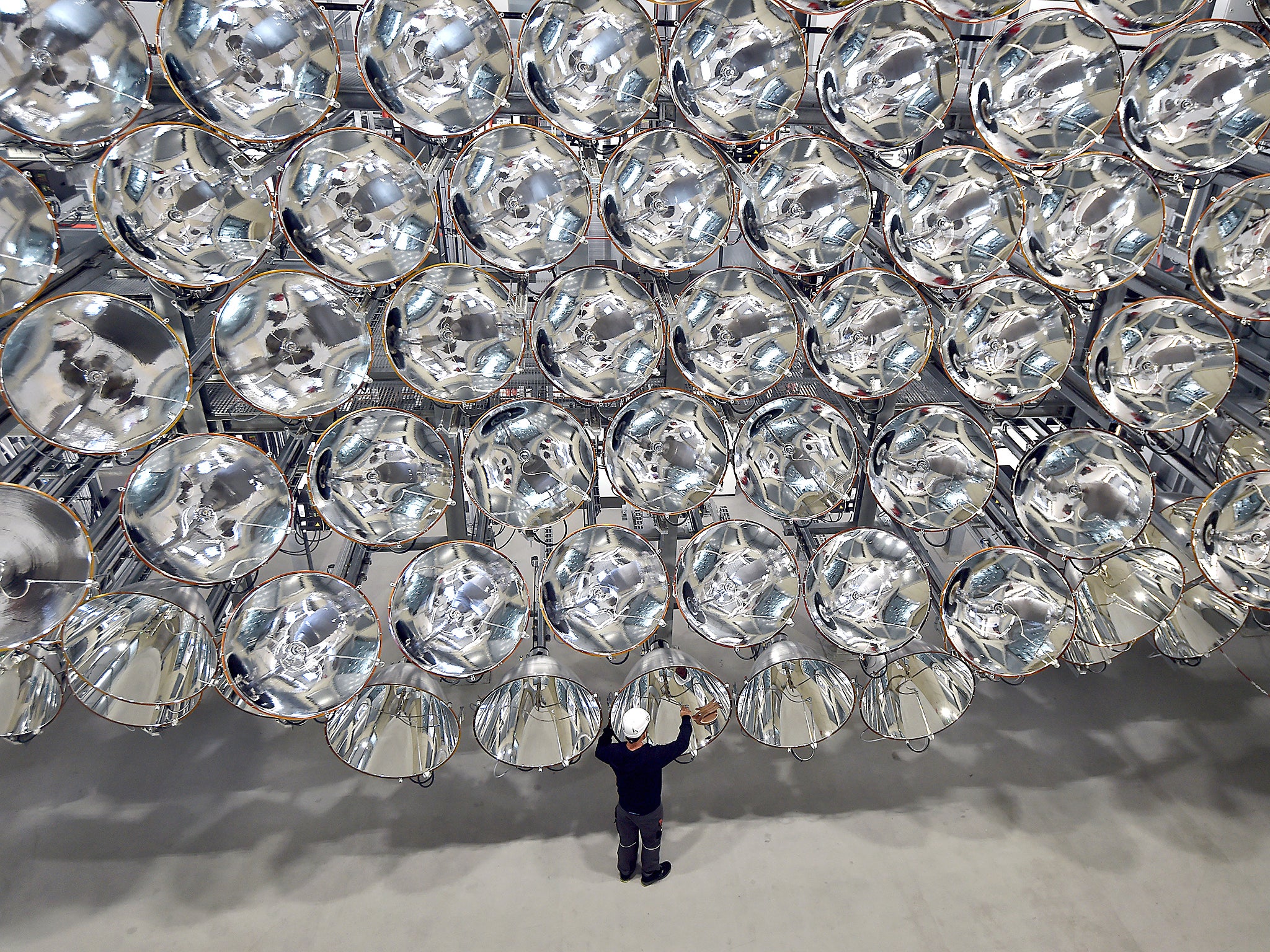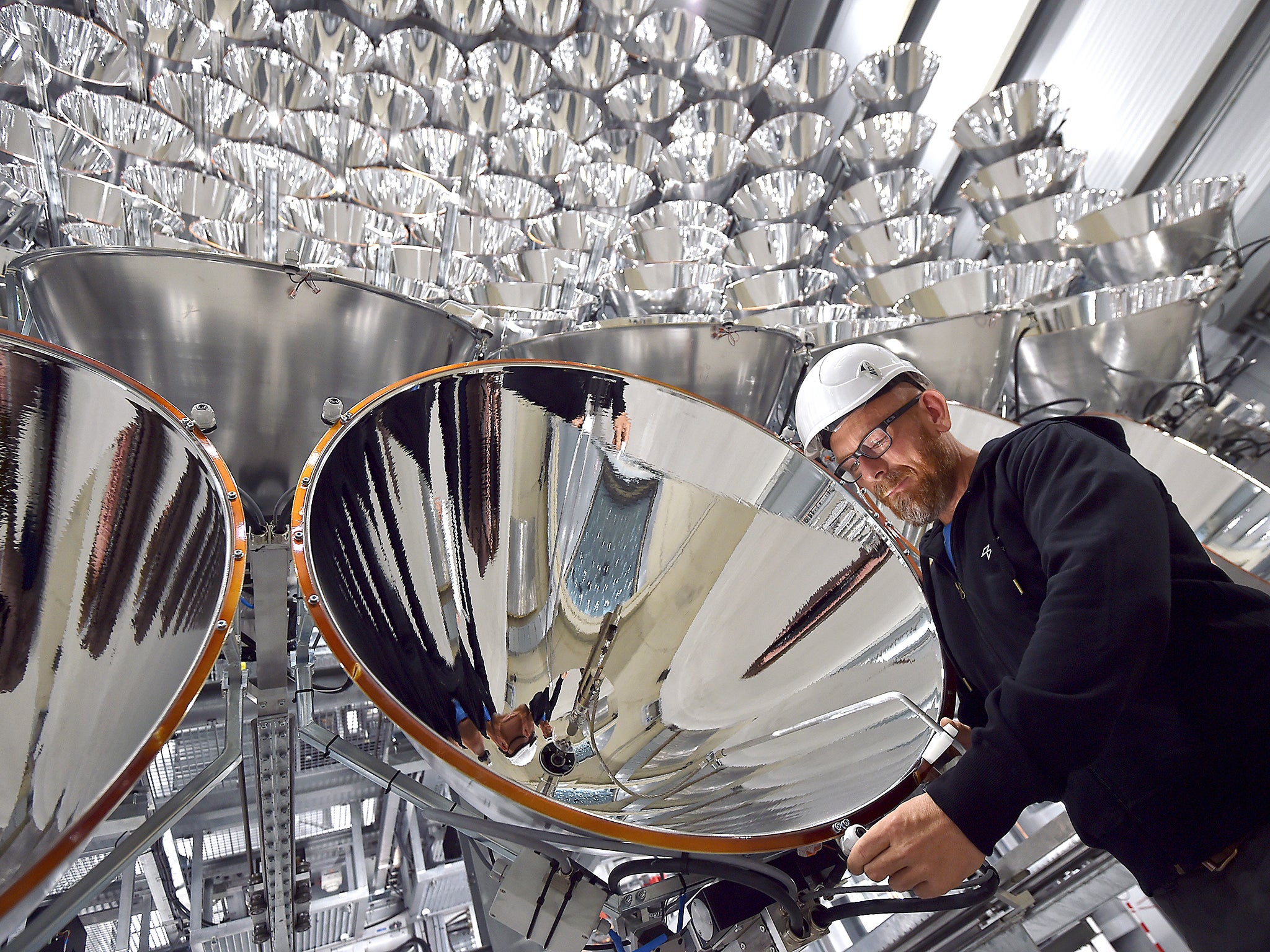Scientists switch on the world's largest 'artificial sun'
The bright experiment could lead to new forms of clean energy

Scientists have just turned on the "world's biggest artificial sun".
The huge structure could help shed light on new ways of making green fuels, among other technologies, the engineers behind it hope.
In all, the sun is made up of a honeycomb of 149 spotlights, which together make the structure known as "Synlight". Inidividually, they are the kinds of xenon short-arc lamps used for cinema projectors, instead put to work simulating sunlight.
If it points all of those lights at one single, small spot, it can create about 10,000 times the amount of solar radiation that would normally fall there.
Such light is in rare supply in Germany at this time of year. So scientists are able to simulate it – and hence test new ways of making hydrogen and exploring cleaner energy sources.
Creating such furnace-like conditions - with temperatures of up to 3,000 degrees Celsius - is key to testing novel ways of making hydrogen, according to Bernhard Hoffschmidt, the director of DLR's institute for solar research.
Many consider hydrogen to be the fuel of the future because it produces no carbon emissions when burned, meaning it does not add to global warming.
Hydrogen is the most common element in the universe, but free, uncombined hydrogen gas is relatively rare on earth. One way to manufacture hydrogen is to split water into its two components - the other being oxygen - using electricity in a process called electrolysis.
Researchers hope to bypass the electricity stage by tapping into the enormous amount of energy that reaches Earth in the form of light from the sun.
Mr Hoffschmidt said the dazzling display is designed to take experiments done in smaller labs to the next level, adding that once researchers have mastered hydrogen-making techniques with Synlight's 350-kilowatt array, the process could be scaled up tenfold on the way to reaching a level fit for industry in about a decade.

The goal is to eventually use actual sunlight rather than the artificial light produced at the Juelich experiment, which cost £3 million to build and requires as much electricity in four hours as a four-person household would use in a year.
Mr Hoffschmidt conceded that hydrogen is not without its problems - for one thing, it is incredibly volatile - but by combining it with carbon monoxide produced from renewable sources, scientists would, for example, be able to make eco-friendly fuel for the aviation industry.
Additional reporting by Press Association
Join our commenting forum
Join thought-provoking conversations, follow other Independent readers and see their replies
Comments